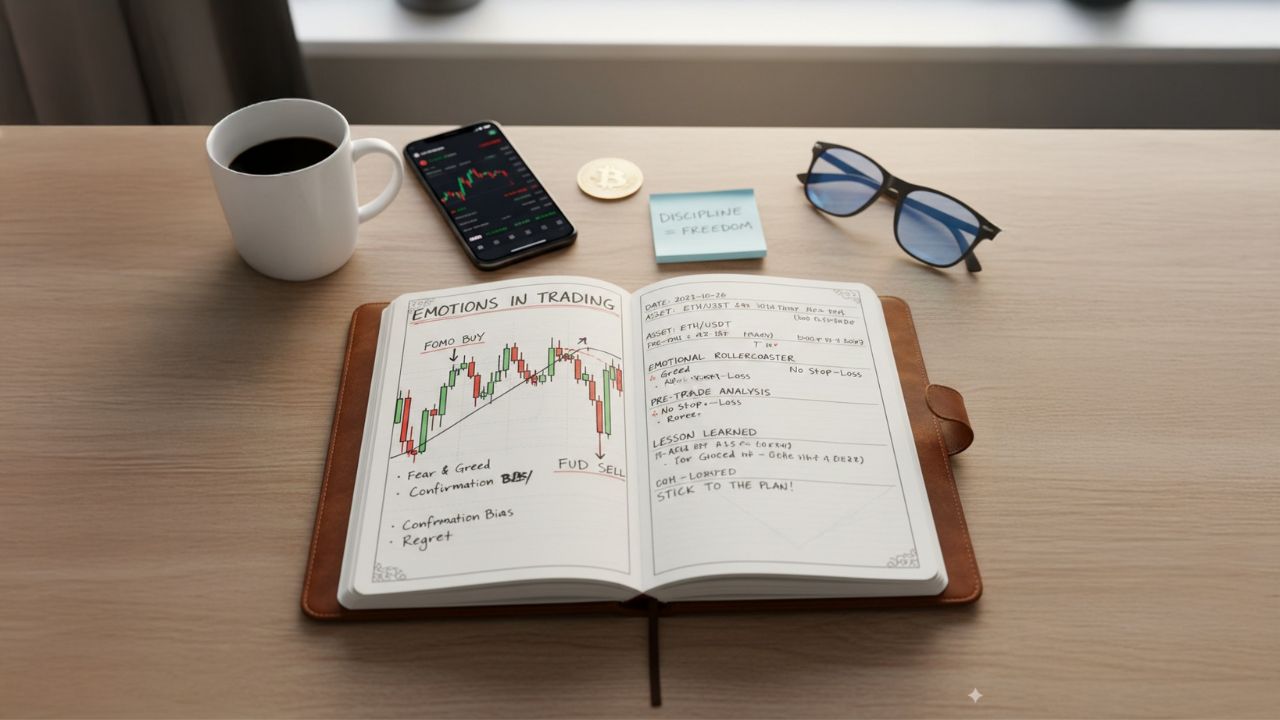
Trading isn't just about charts, signals, or algorithms—it's primarily about psychology. Every decision a trader makes is filtered through their mindset, emotional state, and ability to stick to a disciplined strategy. After analyzing more than 1000 trading journal entries, one truth emerges: the markets expose human behavior more than anything else.
This article dives deep into the recurring psychological themes that traders document, the lessons hidden in patterns of wins and losses, and how journaling shapes a trader's emotional resilience.
Why Journals Reveal the Truth About Trader Psychology
A trading journal is not just a record of entry and exit points. It becomes a mirror of a trader's thinking:
- Patterns of emotion – frustration after losses, overconfidence after wins, fear of missing out.
- Cognitive biases – anchoring on entry prices, confirmation bias with chart patterns, hindsight bias after mistakes.
- Behavioral consistency – whether a trader sticks to their plan or abandons it impulsively.
Over 1000 entries, these patterns stop being isolated moments. They reveal consistent tendencies that shape a trader's results over months and years.
7 Core Lessons from 1000 Journal Entries
1. Emotional swings outweigh technical signals
Many traders discovered that their entries were technically sound, but their exits were sabotaged by emotions. Fear caused early exits, while greed led to overstaying in trades. Journaling these outcomes exposed the real issue—emotional mismanagement, not poor chart reading.
Key takeaway: mastering emotions often has a greater impact on profitability than finding the "perfect" strategy.
2. Overtrading is the silent account killer
Repeated journal reviews showed traders opening too many positions after both losses and wins. Losses fueled revenge trading, while wins triggered euphoria and riskier bets. Overtrading consistently eroded account balances.
Solution: predefined trade limits per day or week.
3. Clear goals drive better consistency
The most consistent traders were those who attached measurable goals to their journals. Instead of vague notes like "trade better," they used structured objectives such as:
- Risk only 1% per trade.
- Take a maximum of 3 trades per session.
- Journal every trade within 30 minutes of closing it.
This structured approach reflects the importance of Adding SMART Goals to Crypto Journal, ensuring objectives are Specific, Measurable, Achievable, Relevant, and Time-bound.
4. Self-talk influences trading behavior
A surprising discovery from many journal entries was the language traders used. Negative self-talk ("I always mess up," "I'm unlucky") correlated with poor performance. Traders who practiced constructive language ("This loss was tuition," "I followed my plan even if it lost") built resilience.
5. Small wins build lasting confidence
While traders love the idea of big wins, journals showed that stringing together many small, consistent profits had a stronger psychological impact. This built confidence, reduced pressure, and encouraged disciplined trading.
6. External factors matter more than expected
Traders often logged external influences—lack of sleep, arguments with family, or stress at work. These factors had a measurable effect on decision-making. Journaling revealed that peak performance happened when life outside trading was stable.
7. Reflection is more powerful than raw logging
Simply writing trades wasn't enough. The traders who grew the most were those who revisited past entries, highlighted recurring mistakes, and created action steps. Journals became living documents for self-improvement.
Common Emotional Patterns in Journals
| Emotion / Bias | How It Appears in Journals | Trading Impact | Practical Fix |
|---|---|---|---|
| Fear | Closing trades too early | Missed profits | Pre-set stop loss & take profit |
| Greed | Holding past strategy limits | Big reversals | Risk-reward ratio discipline |
| Revenge trading | Doubling down after loss | Rapid account drawdown | Daily trade limit |
| FOMO | Entering late on pumps | Poor entries | Rule: never chase candles |
| Overconfidence | Larger position sizes after win | Exponential risk | Fixed percentage risk |
Pros and Cons of Keeping a Trading Journal
Pros
- ⭐ Improves self-awareness.
- ⭐ Tracks patterns over time.
- ⭐ Builds emotional discipline.
- ⭐ Creates accountability for strategy adherence.
Cons
- ⚠️ Time-consuming to maintain.
- ⚠️ Can feel repetitive.
- ⚠️ Easy to skip during stressful periods.
Rating Journals as a Tool for Traders
| Category | Rating (out of 5 ⭐) |
|---|---|
| Emotional control | ⭐⭐⭐⭐☆ (4/5) |
| Strategy refinement | ⭐⭐⭐⭐☆ (4/5) |
| Long-term growth | ⭐⭐⭐⭐⭐ (5/5) |
| Ease of use | ⭐⭐⭐☆ (3/5) |
| Time investment | ⭐⭐☆ (2.5/5) |
Overall Score: 4/5 – Highly recommended
Practical Tips for Building Psychological Strength Through Journaling
- Write more than numbers. Note emotions, thoughts, and triggers.
- Use color coding. Highlight mistakes in red, discipline in green.
- Set a weekly review. Pick one recurring mistake to work on.
- Celebrate following rules, not just wins. Reward yourself for sticking to your process.
- Add external context. Sleep hours, mood, and stress levels often explain poor trades.
- Integrate SMART goals. Turn vague ambitions into actionable targets.
Long-Term Mindset Shifts from 1000 Journal Entries
After reviewing 1000 entries, three mindset transformations stood out:
- From chasing trades to waiting for trades. Patience emerged as the single most profitable skill.
- From self-criticism to self-analysis. Traders who framed losses as lessons grew faster.
- From outcome focus to process focus. Winning trades mattered less than executing correctly.
Conclusion
Trading psychology is not a mystery—it's written line by line in every journal entry. From emotional swings to external life stressors, a trader's mindset leaves visible fingerprints in their logs. The biggest lesson from 1000 entries is that psychology shapes results more than strategy alone.
By committing to journaling, adding structured goals, and reviewing patterns, traders can gradually turn emotional chaos into disciplined control. For those serious about long-term growth, the journal becomes not just a record but a roadmap.






